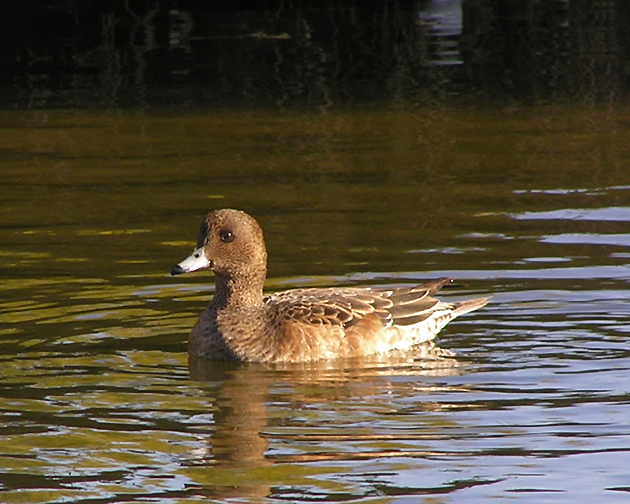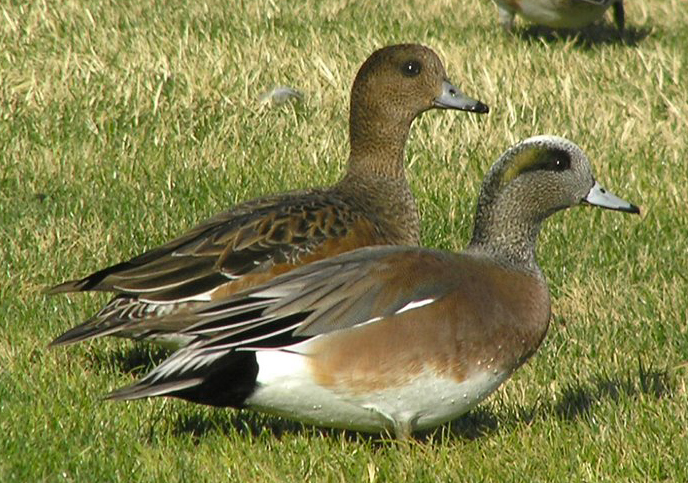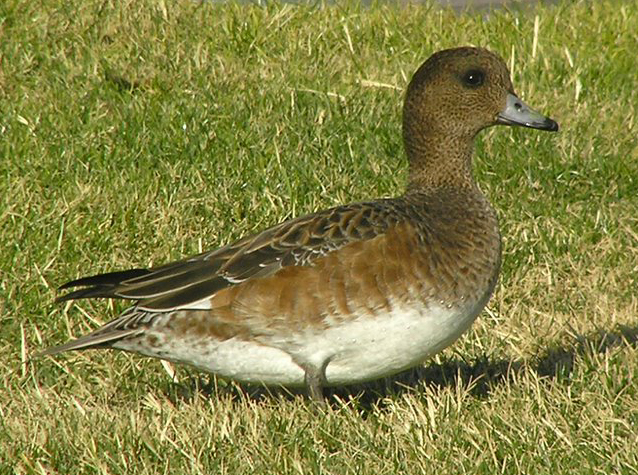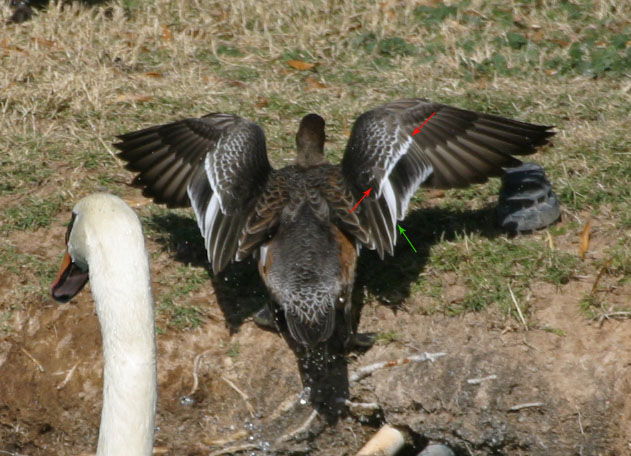 |
 |
|||||||||||||||||||||
|
||||||||||||||||||||||
Eurasian Wigeon (Anas penelope), Paradise Memorial Cemetery, Maricopa County
Photographic summary and notes on identification of female Eurasian Wigeon.
Kurt Radamaker, Pierre Deviche, and Chris Benesh
The wigeon photographed below was found on December 19th at Paradise Memorial Cemetery in Scottsdale by K. Radamaker, and tentatively identified as a female Eurasian Wigeon. The next day P. Deviche obtained these photographs. Thus several Arizona Field Ornithologists exchanged emails discussing the various field marks and pitfalls of identifying female widgeon. All of the first round opinions were in favor of Eurasian Wigeon based on the features described below, but the consensus was that to definitively identify this bird, a photo of the upper wing pattern was needed. On 21 December Radamaker photographed the upper wing pattern and the ID was confirmed. If you plan to visit Paradise Memorial please keep in mind that Paradise Memorial Park is a cemetery where peoples' loved ones are interred. Visiting birders should behave respectfully and responsibly.
There are quite a few published reports of Eurasian Wigeons in Maricopa Co. and elsewhere in AZ but the vast majority of these are of adult male birds. This is likely due to the fact that adult males are much easier to identify so females and young males may simply be overlooked. With a better understanding of the specific plumage features that separate female and young male American from Eurasian Wigeons, observers should have a better chance of finding Eurasian Wigeons in flocks of wintering American Wigeons.

Note the overall brown tone to the head and breast and a lack of contrast between the head, neck and breast.

Presented here is a good comparison of the gray head of an American. This American female also shows the dark line along the gape of the bill characteristic of American and lacking in Eurasian. While the black bill line is sometimes missing on American Wigeon, it is never present on Eurasian. Also note the slight difference in head shape. The Eurasian Wigeon has bit of steeper forehead and flatter crown.

In this Photo note the lack of a black line along the bill, the gray tone to the back, and plain look to the face. Most American Wigeon will show more dark around and especially behind the eye.

Above four photos by Pierre Deviche.
In this photo note the relative plainness to the throat, in most American Wigeon the throat is heavily marked..

Photo by Kurt Radamaker
This photo shows the white tips to the greater wing coverts (red arrows). In adult plumages of American Wigeon the greater coverts are white with broad black tips. Another good mark for Eurasian is the color of the innermost secondary (green arrow), on American Wigeon the inner most secondary is gray and contrasts with the white covert bar, on Eurasian it is white.
Video grab Kurt Radamaker
Here the gray underwing coverts are visible. For more detailed discussion of identification criteria, see the references listed below.
References:
Northern Prairie Wildlife Research Center. Upper wings of American Wigeon
http://www.npwrc.usgs.gov/resource/birds/duckplum/amwigeon.htm
Birding magazine article:
gallery/EUWI_article_ BirdingVol37No2.pdf
Acknowledgements:
We thank Michael Moore, Mark Stevenson, Gary Rosenberg and Roy Jones for providing additional information.Submitted December 2007
|
©2005
|
HOME | | | REPORT SIGHTINGS | | | PHOTOS | | | BIRDING | | | JOURNAL | | | ABOUT US | | | CHECKLISTS | | | AZ BIRD COMMITTEE | | | EVENTS | | | LINKS |